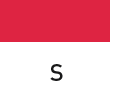SLC9A1solute carrier family 9 member A1
Autism Reports / Total Reports
8 / 8Rare Variants / Common Variants
8 / 0Aliases
-Associated Syndromes
-Chromosome Band
1p36.11Associated Disorders
-Relevance to Autism
Whole genome and/or whole exome sequencing of 435 individuals in 116 ASD families in Viggiano et al., 2024 identified a de novo missense variant with an MPC score greater than or equal to 2 in the SLC9A1 gene in a male ASD proband who also presented with language consisting of single words and borderline IQ. Li and Fliegel, 2015 had previously demonstrated that a de novo missense variant in this gene that was originally identiified in a patient with ASD, intellectual disability, and seizures in Zhu et al., 2015 resulted in abolition of Na+/H+ exchanger activity. Additional de novo missense variants in SLC9A1 have also been identified in ASD probands from multiple cohorts (Yuen et al., 2017; Trost et al., 2022; Yuan et al., 2023; Wang et al., 2023).
Molecular Function
This gene encodes a Na+/H+ antiporter that is a member of the solute carrier family 9. The encoded protein is a plasma membrane transporter that is expressed in the kidney and intestine. This protein plays a central role in regulating pH homeostasis, cell migration and cell volume. This protein may also be involved in tumor growth. Homozygous mutations in this gene are responsible for Lichtenstein-Knorr syndrome (OMIM 616291), an autosomal recessive neurologic disorder characterized by postnatal onset of severe progressive sensorineural hearing loss and progressive cerebellar ataxia.
SFARI Genomic Platforms
Reports related to SLC9A1 (8 Reports)
| # | Type | Title | Author, Year | Autism Report | Associated Disorders |
|---|---|---|---|---|---|
| 1 | Support | The contribution of de novo coding mutations to autism spectrum disorder | Iossifov I et al. (2014) | Yes | - |
| 2 | Support | - | Zhu X et al. (2015) | Yes | - |
| 3 | Support | - | Xiuju Li et al. (2015) | Yes | - |
| 4 | Support | Whole genome sequencing resource identifies 18 new candidate genes for autism spectrum disorder | C Yuen RK et al. (2017) | Yes | - |
| 5 | Support | - | Trost B et al. (2022) | Yes | - |
| 6 | Support | - | Yuan B et al. (2023) | Yes | - |
| 7 | Support | - | Wang J et al. (2023) | Yes | - |
| 8 | Primary | - | Marta Viggiano et al. (2024) | Yes | ID |
Rare Variants (8)
| Status | Allele Change | Residue Change | Variant Type | Inheritance Pattern | Parental Transmission | Family Type | PubMed ID | Author, Year |
|---|---|---|---|---|---|---|---|---|
| c.2326G>A | p.Asp776Asn | missense_variant | De novo | - | - | 36881370 | Yuan B et al. (2023) | |
| c.2272G>A | p.Asp758Asn | missense_variant | De novo | - | - | 36368308 | Trost B et al. (2022) | |
| c.796A>C | p.Asn266His | missense_variant | De novo | - | Simplex | 25590979 | Zhu X et al. (2015) | |
| c.2326G>A | p.Asp776Asn | missense_variant | De novo | - | Simplex | 37393044 | Wang J et al. (2023) | |
| c.232G>A | p.Val78Ile | missense_variant | De novo | - | Multiplex | 28263302 | C Yuen RK et al. (2017) | |
| c.531G>C | p.Leu177= | synonymous_variant | De novo | - | Simplex | 25363768 | Iossifov I et al. (2014) | |
| c.1373G>A | p.Arg458Gln | missense_variant | De novo | - | Multiplex | 28263302 | C Yuen RK et al. (2017) | |
| c.1172A>G | p.Glu391Gly | missense_variant | De novo | - | Simplex | 38519481 | Marta Viggiano et al. (2024) |
Common Variants
No common variants reported.
SFARI Gene score
Suggestive Evidence, Syndromic


Score Delta: Score remained at 3S
criteria met
See SFARI Gene'scoring criteriaThe literature is replete with relatively small studies of candidate genes, using either common or rare variant approaches, which do not reach the criteria set out for categories 1 and 2. Genes that had two such lines of supporting evidence were placed in category 3, and those with one line of evidence were placed in category 4. Some additional lines of "accessory evidence" (indicated as "acc" in the score cards) could also boost a gene from category 4 to 3.
The syndromic category includes mutations that are associated with a substantial degree of increased risk and consistently linked to additional characteristics not required for an ASD diagnosis. If there is independent evidence implicating a gene in idiopathic ASD, it will be listed as "#S" (e.g., 2S, 3S, etc.). If there is no such independent evidence, the gene will be listed simply as "S."
7/1/2024

Increased from to 3S
Krishnan Probability Score
Score 0.45791623642389
Ranking 9719/25841 scored genes
[Show Scoring Methodology]
ExAC Score
Score 0.95222812999887
Ranking 2641/18225 scored genes
[Show Scoring Methodology]
Sanders TADA Score
Score 0.94718571981129
Ranking 17173/18665 scored genes
[Show Scoring Methodology]
Zhang D Score
Score 0.098225396819891
Ranking 6180/20870 scored genes
[Show Scoring Methodology]